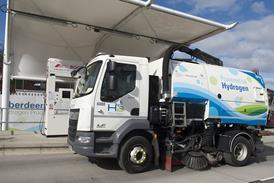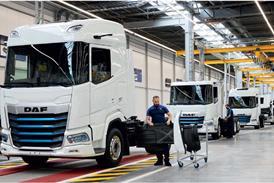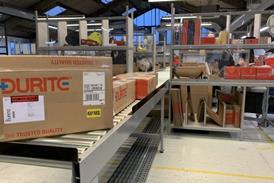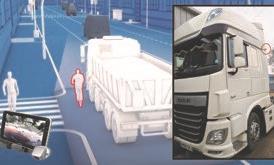
As we enter the ‘fourth industrial revolution’, we are beginning to reap the benefits of digital technologies in the supply chain, from cloud-based transport management systems and AI, through to 3D printing and fleet telematics. Digitisation of the supply chain is a challenging process but one that presents opportunities if properly embraced, says Chris Fenton, MD, Industrial & Transport at Wincanton.
Wincanton argues in its latest publication ‘Transforming Logistics: A Leader’s Guide’, businesses will only fully realise the benefits of these new technologies if they are converged together, rather than operating in isolation.
The ideal level of visibility across the supply chain covers everything. It’s a full view of your suppliers’ supply chain, your customers’ and, of course, your own. With the certainty of this level of understanding, businesses will be able to plan effectively and mitigate risks within and beyond their control.
The problem is that few businesses boast this reach right now. The introduction of blockchain technology presents an opportunity to go beyond traditional methods to better ensure provenance of raw materials and goods.
The practical advantages of this are numerous. For example, effective visibility could help to ensure temperature controlled goods are transported and stored at optimal conditions from start to finish, reducing wastage. Another example would be to speed up the payment process, shortening the order to cash cycle with less physical checks being required.
Big data, big decisions
Data is only as useful as the decisions it informs, so generating effective insight brings huge opportunities to build in cost efficiencies and increase productivity.
Better analysis of data will support faster and more accurate decision making. A top-down view of the data in a business can help break down silos of information. This, in turn, could allow for better integration and co-operation with customers and partners, and a more effective use of human resource to manage customer, supplier and partner relationships.
Leaders and decision-makers can’t see everywhere. Open communication with their teams is crucial to uncover knowledge about the internal situation of a business and can highlight areas that are working particularly well or that require improvement.
Upgrading work
People remain at the heart of logistics. From drivers and warehouse operatives, through to operational and HR experts; logistics won’t deliver if people aren’t at the centre of the process.
So getting the most from people is where future success will be defined, with businesses that successfully manage interactions between humans and automation the ones that will benefit.
Automation can either substitute workers to undertake a simple, repetitive task; or augment workers, expanding their capability to allow them to achieve more and produce a better quality of work in a shorter space of time.
Semi-autonomous HGVs are a topic being discussed widely, but it’s important to remember that human interaction will remain essential for getting these vehicles from point A to B on time, every time.
Building something that lasts
Sustainability matters. The subject has made its way higher up the corporate agenda in recent years, particularly in logistics.
Digitisation can support sustainability across the supply chain in multiple ways, such as more effective transport management systems. Route optimisation and an increased ability to plan dynamically both have obvious positive efficiency repercussions, including reductions in fuel usage and better safety for road users.
Fundamentally, leadership has not changed, but the rapid development and deployment of digital technologies means that the expectations for leaders are shifting and evolving.
The founding editor of 'Wired', Kevin Kelly, described the current digitisation situation for businesses as ‘Protopia’, or constant motion. Technology is moving forward faster than anybody would have thought just a few years ago, so success hinges on the ability to thrive on uncertainty.
The future business leader working in the supply chain needs to embrace change. They have to be as comfortable engaging in digital conversations as they are in financial ones, and at the same time be agile in the way they work to facilitate an environment of open communication. Accepting Protopia and utilising the expertise within their teams will be essential for the future leader’s success.









![Mercedes-Benz_eActros_600_(1)[1]](https://d2cohhpa0jt4tw.cloudfront.net/Pictures/274x183/8/2/0/17820_mercedesbenz_eactros_600_11_978080.jpg)





